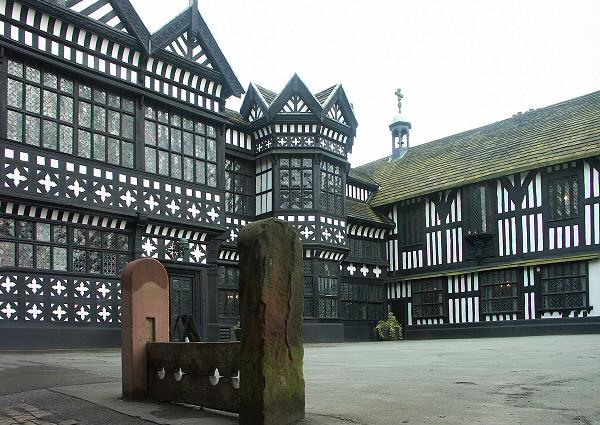

Bramall Hall is a beautiful old timber framed manor house three miles south of Stockport town centre. It is well worth a visit. The grounds are open the year round, but visiting hours for the interior are severely restricted. If you wish to see inside, it is best to check the opening hours on the Hall's web site before visiting.
There has been a house on this site for over a thousand years. Most buildings in the area were destroyed by the Normans in their retribution of 1070. Little is known about them. The earliest part of the present building, the south wing, dates from about 1370.
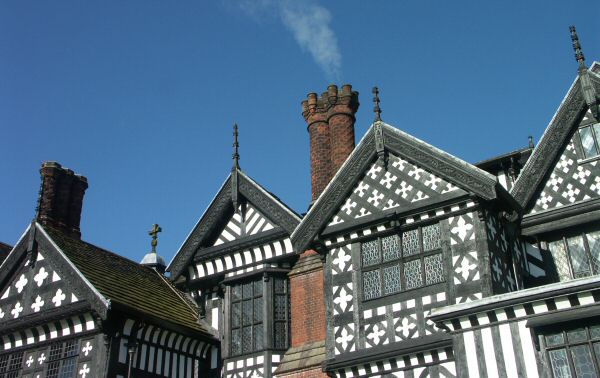
For most of its life the hall has been a family home. Its owners kept it up-to-date with the fashions and family requirements of the time. The present building is the result of additions, changes, and renovations over many centuries. It took on its present external appearance during its last major face-lift in the 19th century. Before that the hall had a third story, a Long Gallery above the roof-line of the present building, as is still present on Little Moreton Hall 18 miles to the south . It is interesting to compare the two buildings. Bramhall incorporates developments from the 14th to the early 20th century, whereas Little Moreton was frozen in time shortly after its constuction in the 16th century.
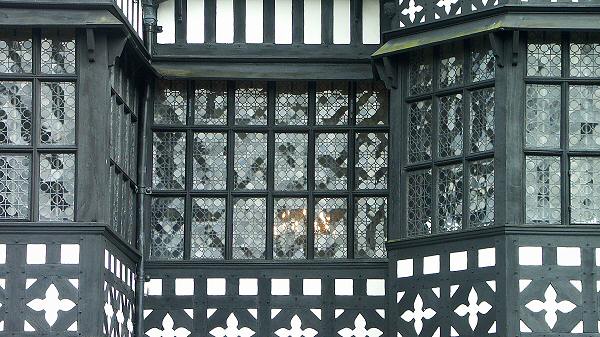
Around 1370 the Bramall Hall passed from the Bromale family to the Davenport family, when Alice, daughter of Geoffrey de Bromale married John de Davenport. The Bromale shield held by an angel is carved into the overhanging wooden support for an oriel window in the south wing, shown in the photo below.
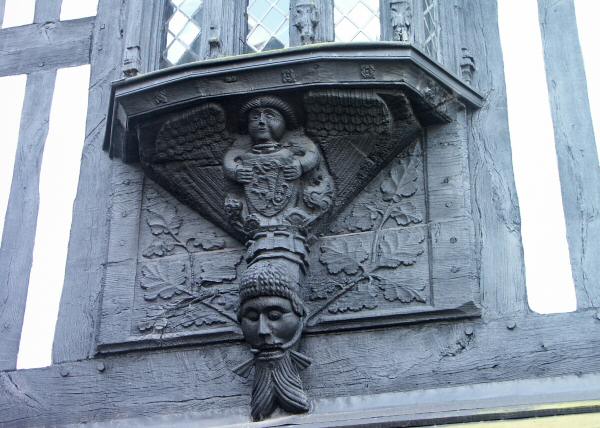
For over 500 years (1370 - 1877) Bramall Hall was the home of the Davenport family. From the early 13th century the head of that family was Grand Serjeant of Macclesfield Forest. The Grand Serjeant was a heredatory position responsible for policing a forest where hunting was reserved for Royalty, and where the likes of Robin Hood roamed. (See the tale about Robin Hood's Picking Rods 10 miles east of here.) No doubt the Grand Serjeant needed a degree of ruthlessness.
The Davenport family crest shows a man with a noose around his neck. In her book on Bramall Hall, E Barbara Dean explains the origin of the crest by writing that it...
| ..."is said to signify the absolute powers of life and death which the grand serjeant held within the forest, and his duty to search out and hang the robbers lurking within its boundaries. Other suggestions contained in story and legend are less kind to the Davenports and offer less worthy reasons for the adoption of this sinister-looking badge." |
Barbara is reluctant to re-tell the legend, but I don't have such scruples. (My wife was born a Davenport. She has given me dispensation). The tale comes from a time when most people couldn't read or write. It has been passed from mouth to mouth over centuries. The version handed down in my family is:
| "Davenport was away from home when a man was brought before him for stealing a horse. Davenport and his men were busy, so he offered the thief a pardon if he would carry a written message to Bramall Hall. The thief kept his part of the bargin. At Bramall, Davenport's steward read the message and obeyed its instructions. He hung the thief." |
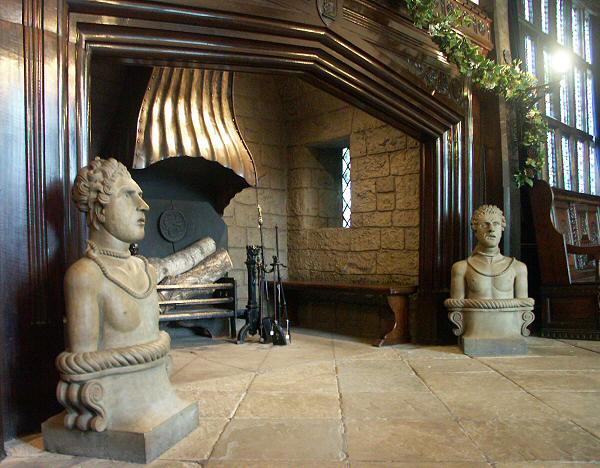
The fireplace in the great hall is flanked by a pair of statues. Each depicts a man's head and shoulders with a noose around the neck.
Many English pubs have two names. The official name appears on the building and is used by visitors, but locals and the pub's regulars use a different name. At Woodford, a mile north of Bramall, the The Davenport Arms is known locally as The Thief's Neck.
There is no-longer a gibbet at Bramall Hall, but in the courtyard the stocks still stand ready for use.
